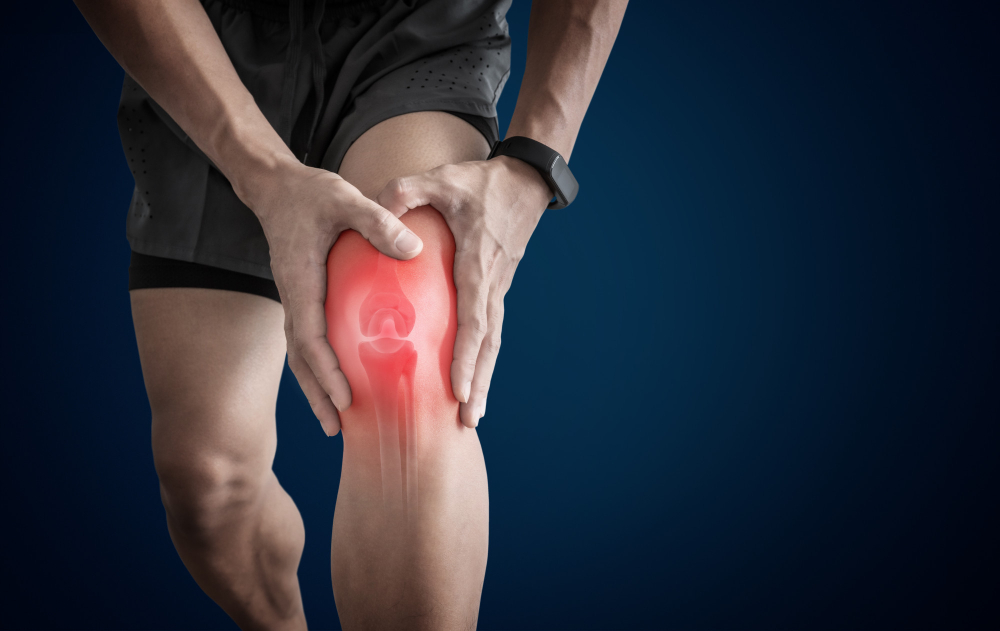The knee functions as a pivotal hinge supporting body weight and enabling movement. When knee pain occurs, daily life can become challenging. Inflammation refers to the body’s reaction to tissue irritation or harm and is marked by swelling, warmth, stiffness, and decreased range of motion. Short-term flare-ups sometimes improve with simple care and adjusting activities, while ongoing symptoms may require a guided approach to recovery.
What Causes Knee Pain?
The knee is made up of bones, ligaments, tendons, and muscles. Knee pain may develop from issues in any of these structures. Overuse can result from escalating activities, often causing pain in the patellar tendon, outer knee, or behind the kneecap. These patterns are linked to repetitive stress and may present with discomfort during movement or after inactivity.
Traumatic injuries can damage ligaments (such as the ACL, MCL, or LCL) or the meniscus. Common symptoms include swelling, a popping sensation, or a feeling of instability. Degenerative changes in the joint can lead to pain and stiffness. Factors like previous injuries, joint structure, workload, and body weight all influence these changes. Inflammatory conditions, affecting the lining of the joint, may cause warmth, puffiness, or stiffness.
How Is It Diagnosed?
Diagnosis begins with a thorough history focused on how the pain began, what makes it worse, and if there was a specific incident. Reports of swelling or instability may point to structural concerns. A physical exam typically includes observation of standing and walking, testing range of motion, assessing strength, and gentle palpation for pain or swelling. Clinicians may also perform targeted tests that place controlled stress on ligaments.
Imaging tools assist when deeper information is needed. X-rays show bone alignment and joint space, ultrasound evaluates soft tissue, and MRI provides detailed views of cartilage and ligaments. Many knee concerns can be managed with clinical assessment, reserving imaging for uncertain situations. Functional analysis, such as observing gait, helps identify movement patterns that contribute to pain. These assessments inform individualized treatment plans.
How Is It Treated?
Treatment is guided by the underlying cause, severity of symptoms, and patient goals. Approaches frequently combine load management, symptom relief, and a structured exercise regimen. Strategies for symptom relief may include ice, compression, and elevation to address swelling.
Therapeutic exercise is central to most recovery plans. Strengthening the muscles around the knee supports joint stability and movement efficiency. Exercises for range of motion and balance may also be included. Manual therapy may be employed to improve comfort and provide short-term support. These interventions are typically used alongside exercise, not as standalone solutions.
In situations where weight contributes to joint loading, weight management may ease symptoms during standing and walking. Attention to hydration and overall nutrition also supports rehabilitation and tissue recovery. Ongoing education and self-management strategies can help reduce setbacks and support steady progress. These strategies can include pacing activities, deliberate warm-ups, and tracking symptoms.
Seek Out Physical Therapy
Persistent or debilitating knee pain can benefit from a tailored plan developed with a licensed physical therapist. Physical therapists assess joint function, mobility, and strength to guide appropriate interventions. Individualized therapy helps address functional goals, guide activity adjustments, and monitor milestones.

